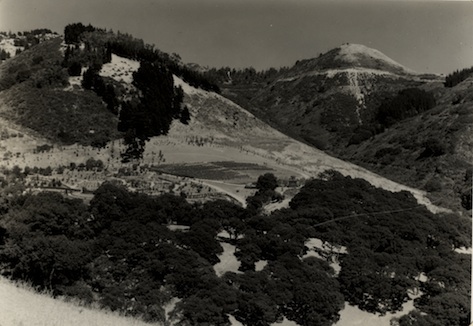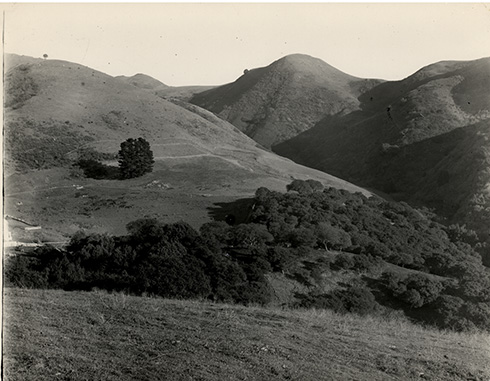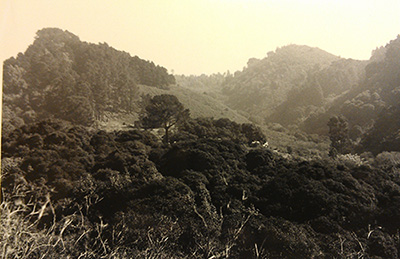I recently came across a print that led me down an interesting visual history of the MVZ’s own backyard. The photo is of Strawberry Creek Canyon in Berkeley, California and it was taken by Oliver P. Pearson in 1996. The photo notes mention that the photo is a retake of MVZ Img 7083. When I pulled up MVZ Img 7083, I was delighted to see that the notes describe the photo as being a retake of MVZ Img 7051. So in essence, these three photos document Strawberry Hill over 100 years.

Photo retake of MVZ Img 7051, Strawberry Canyon, Berkeley, CA , 1935 July 26, Stuart Wood Grinnell, MVZ Img 7083.
This only demonstrates the power of metadata. This level of cataloging ensures that we can make these types of connections and discoveries possible.
Photo retake information does not fit nicely in most metadata schemas but it is an important visual tool in capturing changes. We sometimes receive rich metadata with images but fitting those data in existing schemas can be like fitting a square peg in a round hole. Is it feasible to make rich metadata structured? I think it warrants discussion, if nothing else, to make these kinds of connections more dynamic.
You can view more MVZ photo retakes on the MVZ’s Grinnell Resurvey Project. Both the Yosemite and Lassen sites have galleries of photo retakes.
Additionally, if you are interested in citizen science approaches to photo retakes, I highly recommend the Alpine of the Americas Project. This project aims to provide climate scientists with photo retakes that document changes in our watersheds.


